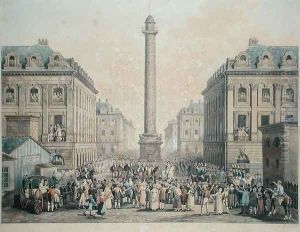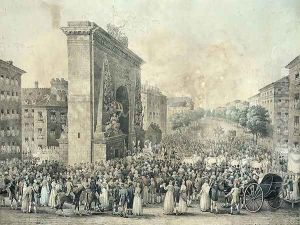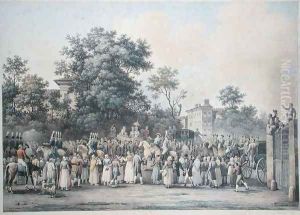Nicolas Joseph Vergnaux Paintings
Nicolas Joseph Vergnaux was a French painter and lithographer who lived during the 18th and early 19th centuries. Vergnaux was born in 1746, although the exact details of his early life and training are not well-documented. His work spanned a period of great change in France, including the French Revolution and the Napoleonic era.
Vergnaux's career is notable for his contributions to the development of lithography, a printing process that was emerging at the time. He is often credited with being one of the early adopters of this technique in France. Lithography allowed for the mass production of images and was particularly useful for creating reproductions of artworks, illustrations for books, and various kinds of printed materials.
Despite the significance of his work with lithography, Vergnaux's artistic output is not as well-known as some of his contemporaries. This may be due to the fact that he worked during a tumultuous period in French history when many artists were struggling for recognition and patronage. Additionally, as lithography was a relatively new medium, artists specializing in this form may not have received the same level of attention as those working in more traditional media like painting or sculpture.
Vergnaux died in 1816, and while his work may not have been widely celebrated during his lifetime, his contributions to the field of printmaking and lithography are recognized by historians and collectors today. His legacy includes a body of work that reflects the technological and artistic innovations of his time.



